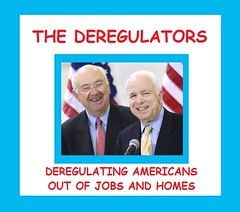Question by nomethinks: What is the private-label securitization market ?
I have the idea that it is where private investors hold bonds backed by subprime mortgages (in the past, now); I want to know, what is the expanse of the private label sec market? That is to say, what other assets and such can be included in this beyond subprime loans (if any)?
Thanks in advance- I really appreciate all the people who devote time to educate others on Yahoo! Answers.
Best answer:
Answer by jwishz
Secretary Henry M. Paulson, Jr.
Statement on Covered Bond Best Practices
Washington – Good afternoon. Thank you all for coming today. Joining me on stage are FDIC Chairman Sheila Bair, Federal Reserve Governor Kevin Warsh, OCC Comptroller John Dugan and OTS Director John Reich. We also welcome representatives from Bank of America, Citigroup, JP Morgan Chase, and Wells Fargo. I will make a few remarks, my colleagues will also address you and then Jeff Brown with Bank of America will speak.
As we are all aware, the availability of affordable mortgage financing is essential to turning the corner on the current housing correction. And so we have been looking broadly for ways to increase the availability and lower the cost of mortgage financing to accelerate the return of normal home buying and refinancing activity.
The housing government-sponsored enterprises, Fannie Mae, Freddie Mac and the Federal Home Loan Banks, and the Federal Housing Administration are funding more than 70 percent of residential mortgages during these months of market stress. They must continue to be active here.
At the same time, private-label securitization, another important source of mortgage finance, has become severely strained and credit conditions have tightened. In addition to securitization done by housing GSEs, private mortgage-backed securitization benefits the American consumer and our markets. The private-label market will evolve in response to current challenges, and I expect it to return with greater risk-awareness and investor discipline. We also believe it is useful to explore additional mortgage financing options to complement more traditional funding models.
One option we have looked at extensively is covered bonds, which are a $ 3 trillion market used widely in Europe for mortgage funding. I believe covered bonds have the potential to increase mortgage financing, improve underwriting standards, and strengthen U.S. financial institutions by providing a new funding source that will diversify their overall portfolio.
Treasury has been working with our regulatory counterparts to look at ways to support the emergence of the covered bond market in the United States. We consulted with our European counterparts, including the UK Treasury. We also spoke with potential U.S. market participants, including issuers, investors, underwriters and ratings agencies. While many European countries have dedicated covered bond legislation, the U.S. regulatory environment is different. Covered bonds are a promising financing vehicle and we believe this market can grow in the United States absent federal legislative action.
To help achieve our goal of broader choices in mortgage finance, today Treasury is publishing a Best Practices guide for U.S. residential covered bonds. This document is intended to outline practices that will promote covered bond market simplicity and homogeneity, using high quality mortgages as collateral. It is a starting point and complements the FDIC final policy statement of July 15th.
I appreciate the FDIC’s strong leadership in advocating covered bonds and providing clarity to potential investors. Together, the FDIC final policy statement and a Treasury Best Practices guide should give market participants the tools to build a market that will benefit U.S. families and the U.S. economy. A U.S. covered bond market also will present new opportunities for further international investment in the United States.
We knew that this initiative would be successful only if the largest banks paved the way. And so I welcome the announcement by America’s four largest banks, Bank of America, Citigroup, JPMorgan Chase and Wells Fargo, that they intend to establish covered bond programs and kick-start this market in the United States. And, I am also pleased to know that the two existing domestic issuers of covered bonds intend to align their programs with these new practices.
We applaud these banks for their leadership and for recognizing an opportunity to help increase mortgage funding availability and strengthen our financial system. We are at the early stages of what should be a promising path, where the nascent U.S. covered bond market can grow and provide a new source of mortgage financing.
Covered bonds are simply one tool for mortgage financing and will not, alone, complete the housing correction. We will continue to pursue our efforts to avoid preventable foreclosures and to speed, without impeding, the necessary course of this housing correction. Thank you and now
B a c k g r o u n d
The earliest securitized transactions date back to the early
1970s and were the sales of pooled mortgage loans by the
Government National Mortgage Association ( Ginnie Mae).
These transactions were followed by the Federal Home Loan
Mortgage Corporation (Freddie Mac) and Federal National
Mortgage Association (Fannie Mae) in the early 1980s. These
new securities were backed by full faith and credit of the
respective agencies which were either government agencies
(Ginnie Mae) or quasi-government agencies (Fannie Mae and
Freddie Mac). Because of such backing and guaranties, these
securities (also known as single-class mortgage pass-throughs)
carried an implied AAA credit rating. However, the capital
markets were looking for more technological innovations to
satisfy their investors. They were looking for diverse maturity
mortgage product which gave rise to the concept of
collateralized mortgage obligations (multiclass mortgage pass
throughs, CMOs or MBS) soon to be followed by asset-backed
securities (ABS). Some of these securities have managed to
become among the most exotic securities on the street.
Today, the total outstanding issuance of CMOs, MBS and ABS
has reached a staggering level of over two trillion dollars. The
non-agency or private label multiclass mortgage-backed passthrough
market originated in response to an increased
demand for low credit risk mortgage-backed securities with
diverse cashflow and maturity characteristics. The difference
between agency and private label transactions is as follows: in
the case of agency transactions, the underlying single-class
mortgage pass-through pools are government or quasigovernment
obligations and, therefore, the credit risk of such
pools is retained by these agencies and is negligible to the
investors, and in the case of private label transactions, the risk
of the underlying mortgage loans is fully transferred to the
willing investors as described below.
Ginnie Mae
The primary purpose of establishing Ginnie Mae was to
fund the government-sponsored residential mortgages
originated by various lenders by creating an active
secondary mortgage market. Unlike Fannie Mae and
Freddie Mac, Ginnie Mae does not purchase mortgages
from lenders.
The credit risk is relatively higher in the private label market
because the losses on the mortgage loans must be absorbed
directly by the investors. Unlike agency transactions, there is
no guarantee of timely or eventual payment of either principal
or interest to such investors. For investors, analysis of relative
priority of cashflows as well as the credit risk of the underlying
mortgage loans take a significant role in the private label
market.
The success of securitization in the mortgage market and the
acceptance of new securities by the investors has lent application
of this concept to other assets such as credit cards, auto
loans, leases and many others. The primary focus here is to
deal with the concept of securitization in the context of some of
the other commonly securitized assets. We will assess the
needs of financial institutions and industrial firms to apply this
technology to create a source of funding for themselves.
Fixed income or derivative?
MBS/ABS are considered fixed-income securities as well as
derivative securities. Fixed-income pertains to the fact that
MBS/ABS generate a coupon income (not necessarily a fixed
dollar amount) periodically whereas derivative refers to
MBS/ABS being carved or derived out of an underlying pool
of assets. Unlike other fixed income securities such as corporate
bonds, MBS/ABS are fairly complex instruments to
analyze. As mentioned above, MBS/ABS are structured to
satisfy the risk, return and maturity characteristics of
different investors. Imagine an upward-sloping yield curve
vertically cut out into small slices where each slice represents a
tranche or a class in an MBS/ABS. Each tranche has a
different priority of payment of interest and principal. This
priority of payment is what makes MBS/ABS somewhat difficult
to analyze.
All agency securitizations are implicitly AAA rated and
therefore carry negligible credit risk, whereas, the privatelabel
market has produced multiclass mortgage pass-throughs
with ratings ranging from AAA to below investment grade.
Basic Analysis
In view of the fact that securitization technology has grown
tremendously not only domestically but also globally calls
for a better understanding of this technology. The basic
rule of thumb to understanding this innovative process is to
stick to the basics! Information overload can prevent
people from learning and understanding the benefits and
attributes of such technology. We will study some of the
2
3
4
5
6
0 10 20 30
1
attributes from both an issuers and investors perspective. We
will approach this process in two parts. First, we will determine
why securitization may be beneficial to some issuers; and
second, why investors may want to buy these securities.
Why securitize? Issuers perspective.
Why buy? Investors perspective.
Why Securitize? Issuers perspective.
Securitization offers several benefits to an issuer. Instead of
simply listing out the benefits, lets take a methodical
approach to finding out
Give your answer to this question below!






